Animal Adaptations and Traits Teaching Resources
Get ready to teach about animal adaptations and animal traits this school year with printable worksheets, digital activities and more teacher-created resources for elementary and middle school teachers.
This collection of elementary school science curriculum resources includes printables and Google Slides templates that have been thoroughly reviewed by our expert teaching team to ensure they're ready for your lesson plans and your students.
Save time on lesson planning with curriculum-aligned instructional slide decks, vocabulary guides and activities that can easily be differentiated to meet your students' individual needs.
New to tackling this topic in the classroom? The expert science teachers on the Teach Starter team have put together the answers to some of teachers' most common questions about animal adaptations and animal traits!
What Are Animal Adaptations? A Kid-Friendly Definition
Let's start with an easy way to explain what adaptation in animals is to your class! Here's a kid-friendly definition from our teacher team:
Adaptation is when animals change their bodies or behaviors to survive better in their environment. Humans may put on a jacket when it's cold outside — that's an example of how we adapt. Animals also have their own special ways of dealing with different environments.
How Do Animals Adapt to Their Environments?
Just as there are countless kinds of animals living around the world, there are many ways that different animals will adapt to their environment. There are two major types of adaptations
Behavioral Adaptations
One way that an animal can adapt is through a process called behavioral adaptation. This kind of change doesn't require a change in the animal's DNA or its physical features.
Instead, this involves changes in an animal's actions or habits that help them survive in their environment, such as a bear hibernating during the winter.
Structural Adaptations
Another way that animals adapt is through changes to physical features or body parts. These are called structural adaptations, typically occurring over time via evolution, the process of gradual change in species over many generations.
A polar bear's white fur is a good example of a structural adaptation for this tundra animal. The color of the fur helps polar bears blend in with the snowy environment of the Arctic, providing camouflage and making it easier for them to hunt and sneak up on prey.
What Are Some Animal Adaptation Examples for Kids?
Looking for more animal adaptation examples that kids love to share with your students? Give these a try!
Desert Animal Adaptations
- Camels have humps that store fat, which they can use as food and water when there's not much available.
- Desert snakes have scales that help them move smoothly on the sand.
- Beetles that live in the desert have a hard outer covering that prevents them from losing water.
Tundra Animal Adaptations
- In addition to the color of their fur, polar bears have thick fur and a layer of blubber (fat) that keep them warm in the freezing cold.
- Arctic foxes can change the color of their fur from brown in the summer to white in the winter to blend in with the snow.
- Caribou have wide hooves that help them walk on the soft tundra and dig through the snow for food.
- Free Plan
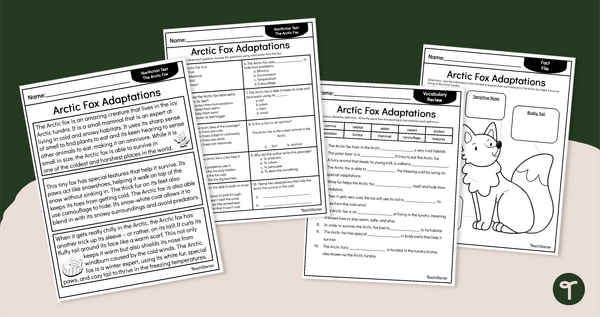
Arctic Fox Adaptations - Free Comprehension Worksheet
Read and learn about Arctic fox adaptations with a set of printable Reading Comprehension Worksheets for 2nd and 3rd grade.
- Free Plan
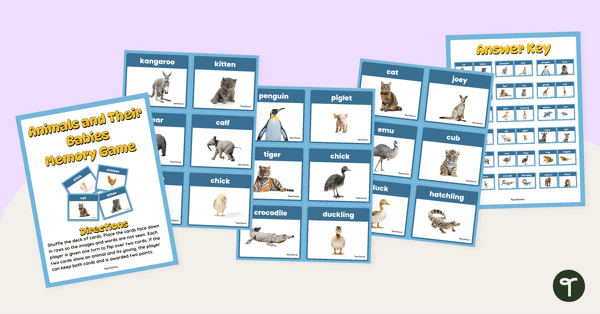
Animals and Their Babies Memory Game
Play a fun Memory-style animal game for kids to learn about animals and their babies.
- Free Plan
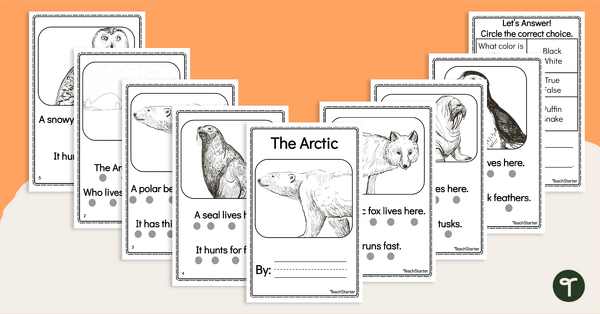
In the Arctic - Free Decodable Book
Engage your students and inspire them to read and learn about life in the Arctic with a printable book for 2nd grade.
- Free Plan
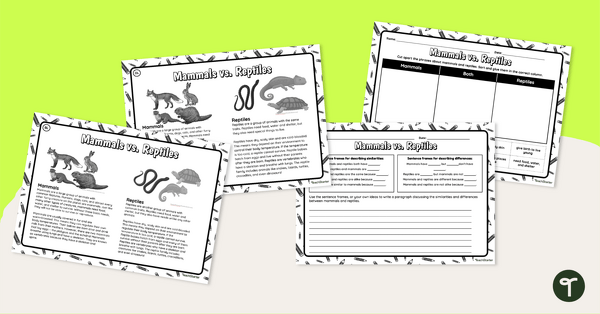
Paired Passage Worksheets-Mammals vs. Reptiles
Compare mammals vs. reptiles and add to your reading instruction with leveled nonfiction, compare and contrast passages and worksheets.
- Free Plan
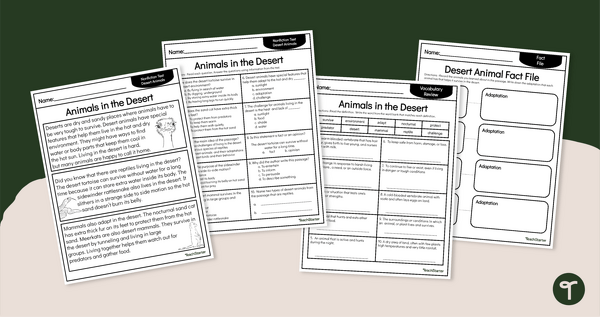
Free Desert Animal Adaptations Worksheets - Comprehension
Discover desert animal adaptations with a printable reading comprehension worksheet pack for 3rd grade.
- Plus Plan

Winter Survival Adaptations - Sorting Activity
Match the animals with the behavioral adaptation that helps them survive the winter in this printable animal adaptation sorting activity.
- Plus Plan

Adaptive Animals of the Arctic - Adaptations Worksheets
Explore the adaptations of polar animals and discover how they help them survive with a set of cut-and-paste labeling activity sheets.
- Plus Plan
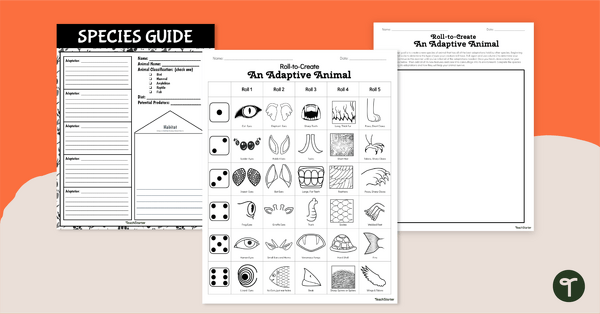
Roll to Create an Animal - Adaptations Activity
Roll to choose cool animal adaptations for a mystery animal using a fun dice game and report template.
- Plus Plan
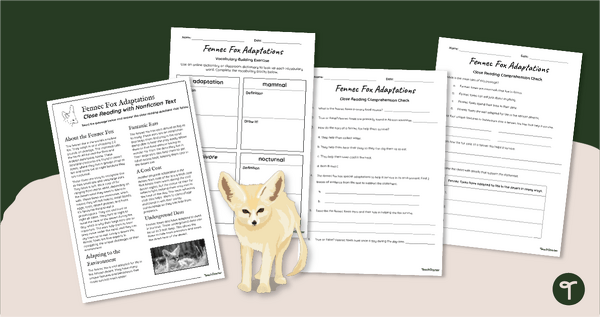
Fennec Fox Adaptations - Close Reading Worksheets
Read and learn about Fennec Fox adaptations with a set of printable Reading Comprehension Worksheets for 5th grade.
- Plus Plan
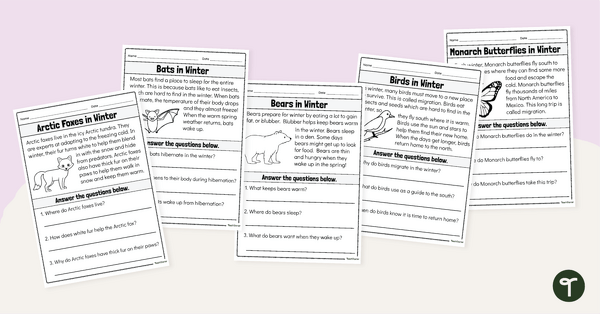
Animals in Winter - 1st Grade Reading Worksheets
Learn about animals in winter with a printable pack of 1st Grade Reading Worksheets.
- Free Plan
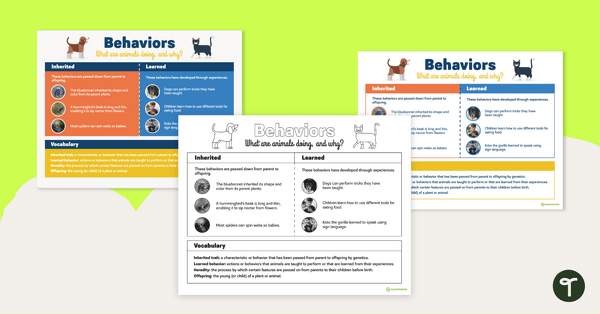
Inherited versus Learned Behaviors Poster
Explain the difference between inherited and learned behaviors with a set of printable anchor charts.
- Plus Plan
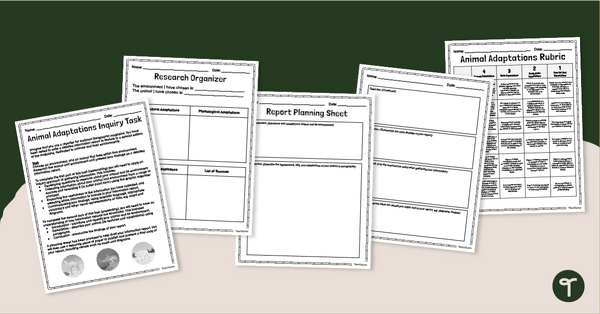
Animal Adaptations Project & Report
Strengthen your students' understanding of conducting research with an Animal Adaptations project.
- Plus Plan
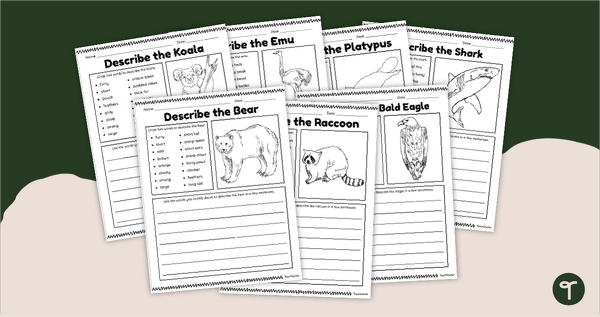
Describing Animal Adaptations - Informative Writing Prompt Worksheets
Write to describe animals and their adaptations with a printable pack of informative writing worksheets.
- Plus Plan

Nocturnal Animals Activities for Preschool & Kindergarten
Introduce your students to the creatures of the night with five nocturnal animal activities for kids!
- Plus Plan
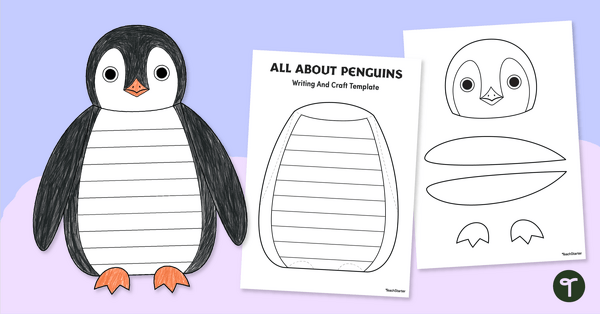
Penguin Craft & Writing Template
Research and write about penguins and their adaptations, then create a fun penguin craft to display student work.
- Plus Plan
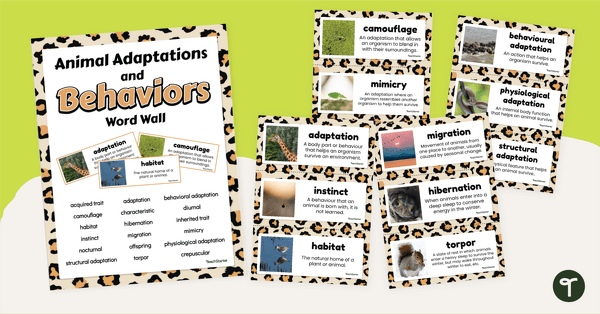
Animal Adaptations Vocabulary Display
Introduce animal adaptation and behavior vocabulary with a word wall featuring photographs and definitions of adaptation-related words.
- Plus Plan
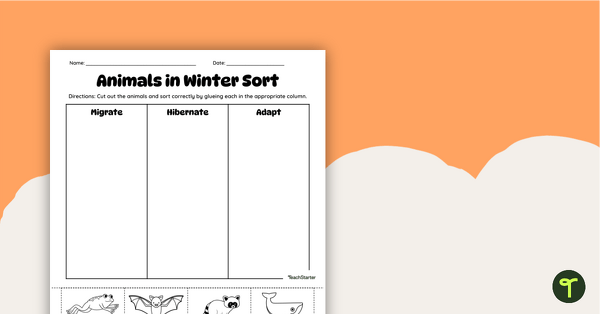
Animals in Winter - Kindergarten Science Worksheet
Cut and sort animals that hibernate, migrate, and adapt with an ‘Animals in Winter’ sorting activity.
- Plus Plan
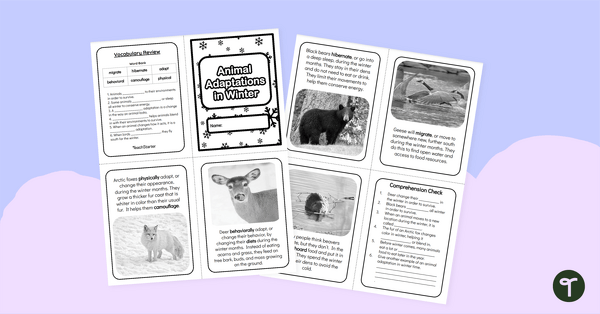
Animals in Winter - Adaptations Mini Book
Discover the amazing adaptations of animals in winter with a printable mini-book.
- Plus Plan
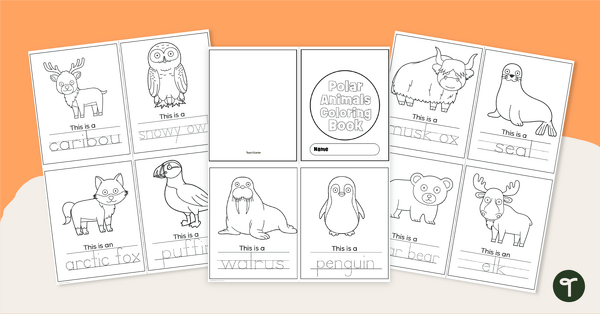
Winter Animals Coloring Page Booklet
Engage your little learners and build vocabulary skills with a printable winter animals coloring book.
- Plus Plan
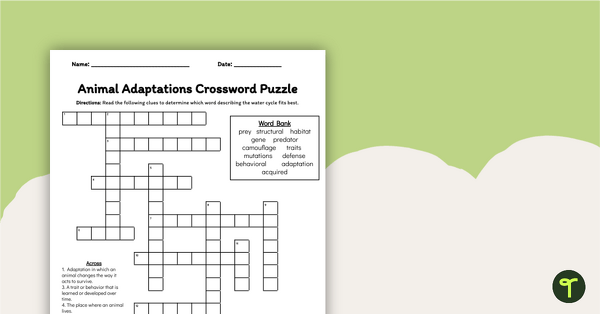
Animal Adaptations Crossword Puzzle
Use an Animal Adaptations Crossword puzzle to review concepts related to physiological, structural, and behavioral adaptations.
- Free Plan
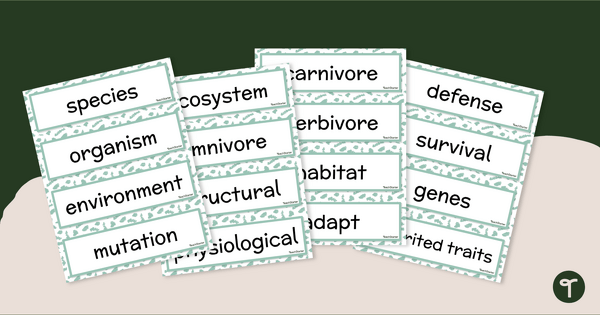
Plant and Animal Adaptations – Word Wall Vocabulary
Build scientific vocabulary skills with a printable display of words relating to plant and animal adaptations.
- Plus Plan
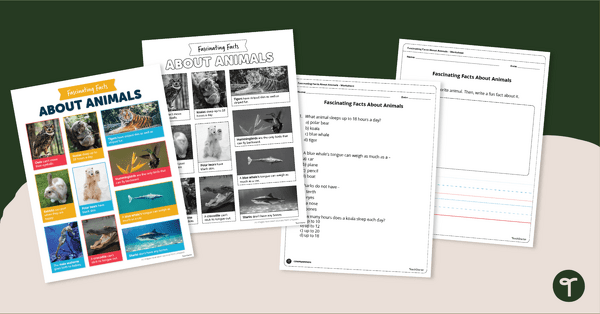
Fascinating Facts About Animals – Comprehension Worksheet
Build reading comprehension skills and learn about amazing animals with a printable 1st grade reading comprehension worksheet pack.
- Plus Plan
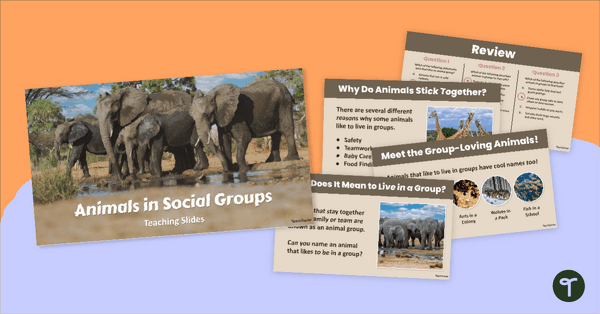
What Animals Live in Social Groups? PowerPoint Presentation
Discover what animals live in social groups and why with an engaging interactive Animal Behavior PowerPoint.
- Plus Plan
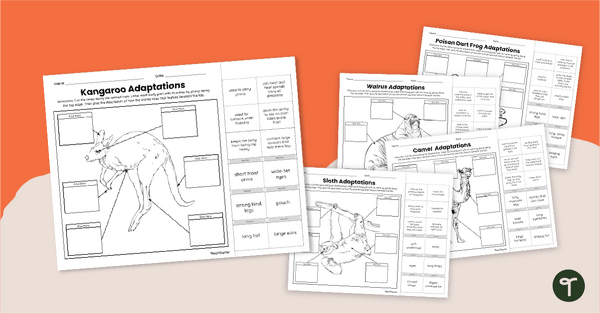
Animal Adaptations for Kids - Worksheet Pack
Identify and label different animal features and discover how these adaptations help animals survive with a pack of printable lift-the-flap matching worksheets.
- Plus Plan
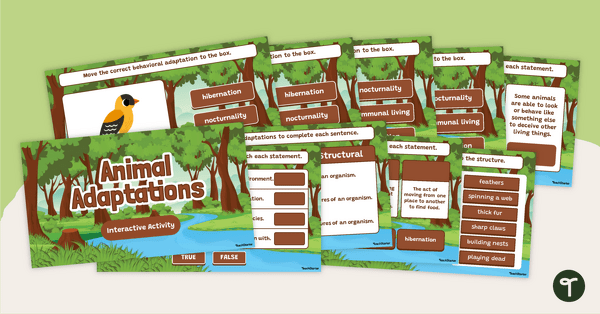
Animal Adaptations Digital Learning Activity Slides
Discover a variety of structural, behavioral, and physiological adaptations with an Animal Adaptations Digital Learning activity.
- Plus Plan
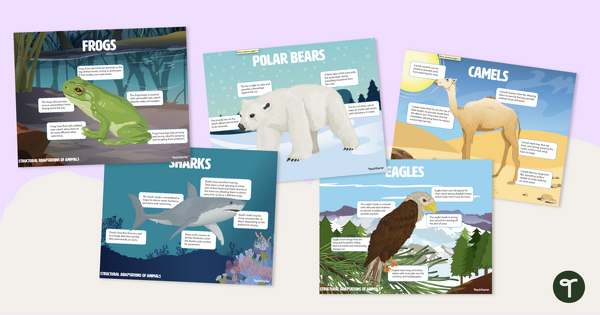
Animal Adaptations - Structural Adaptation Posters
Highlight some physical adaptations of animals with a printable set of labeled anchor chart.
- Plus Plan
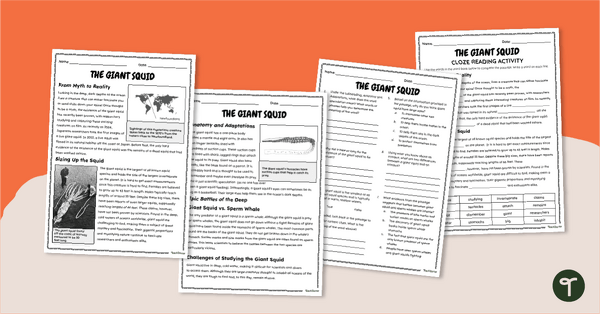
Giant Squid Reading Comprehension Worksheets - 5th Grade
Read and learn about the features and adaptations of the giant squid with reading comprehension worksheets for 5th grade.
- Plus Plan
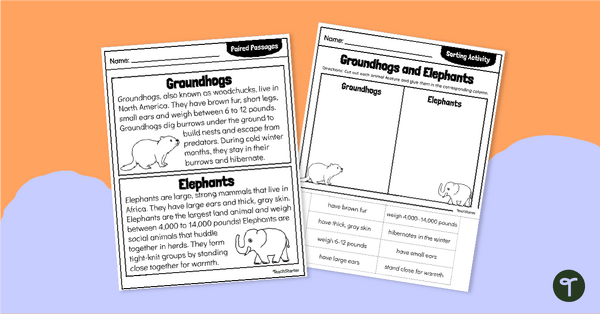
Groundhog Day Worksheets - Cut and Sort Activity
Compare and contrast a groundhog and an elephant with a fun Groundhog Day themed compare and contrast sort.
- Plus Plan

Animals that Hibernate & Migrate Picture Posters
Explore animal hibernation and migration and learn about the animals that use these behavioral adaptations with a printable animal poster pack.
- Plus Plan
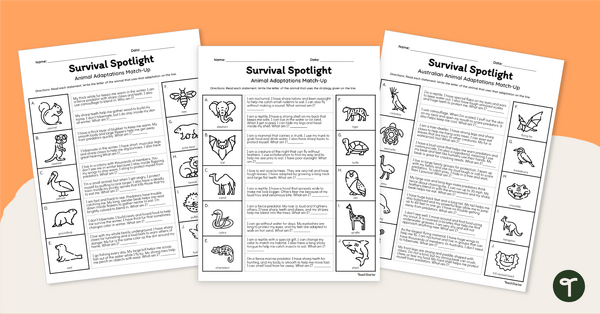
Survival Spotlight - Physical Adaptations Animal Riddle Worksheets
Shine a spotlight on animal adaptations and solve riddles with printable animal adaptation riddle worksheets.
- Plus Plan
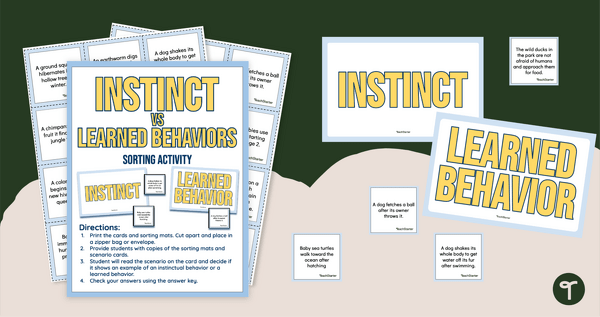
Instinct vs. Learned Behavior Sort
Help your students determine the difference between a learned behavior and an instinct with a thought-provoking sorting activity.
- Plus Plan
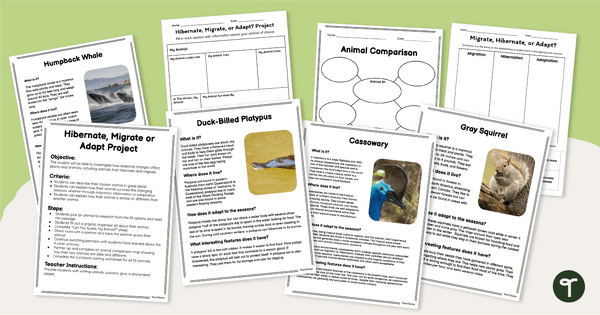
Adapting, Migrating, & Hibernating Animals Research Project
Set this classroom project for students to explore the topic of how seasons affect animals, and develop a species-specific profile on a chosen animal.
- Animal Adaptations and Traits Worksheets
- Animal Adaptations and Traits Posters
- Animal Adaptations and Traits Games
- Animal Adaptations and Traits for Kindergarten
- Animal Adaptations and Traits for 1st Grade
- Animal Adaptations and Traits for 2nd Grade
- Animal Adaptations and Traits for 3rd Grade
- Animal Adaptations and Traits for 4th Grade
- Animal Adaptations and Traits for 5th Grade
- Animal Adaptations and Traits for 6th Grade